Pilot 1st Officer Aaron Adrian (left), flight attendant Kimberley Shepherd, Andrew Pierini of Tulsa International Airport and Alexis Higgins of Tulsa International Airport cut a ribbon as Allegiant Air begins a new nonstop route from Tulsa International Airport to Sarasota Bradenton International Airport in Florida on Dec. 15.
An electric vehicle maker energized the area with a proposal to build a huge factory in northeast Oklahoma.
Amazon made another large commitment to the area, and Tulsa International Airport took flight by booking many new nonstop destinations.
These were among the business stories that helped mitigate the mega-jolt to the local economy delivered by COVID-19 a year earlier.
The Tulsa World, in consultation with Kian Kamas, executive director of the Tulsa Authority for Economic Opportunity, and Terry Simonson, director of government affairs for Tulsa County, has chosen the top 10 local business stories of 2021.
In no particular order, here they are.
Tulsa metropolitan area hits 1 million in population
It was announced in May that the Tulsa metropolitan statistical area had reached a population of 1,006,411. Kamas said the news reflects positive and accelerating economic momentum built via major regional investments, strong job growth and innovative efforts such as the Tulsa Remote program.
“Additionally, reaching this milestone is critical to ongoing business development efforts, as companies and site location consultants often use a 1 million population as a benchmark for determining which cities to consider for major jobs projects,” she said.
Future Canoo presence in Pryor, Tulsa
In June, electric vehicle manufacturer Canoo announced plans to build a $400 million plant at MidAmerica Industrial Park in Pryor, creating 2,000 jobs.
In November, the company said it was partnering with the Tulsa-based George Kaiser Family Foundation to add a technology hub and software development center in Tulsa, generating 375 more jobs.
Canoo CEO Tony Aquila said linking with GKFF will help in the “transformation of Tulsa into a vibrant and inclusive economy while helping us with recruiting, education and diversity of our workforce.”
Comeback for airline industry
Among the hardest hit by COVID-19 was the airline sector, which watched its passenger count drop by about 95 percent during the pandemic’s strongest foothold.
But thanks in large part to government assistance and coronavirus vaccinations, the aviation industry has gained altitude.
Tulsa International Airport (TUL) added nine new nonstop destinations in 2021 (seven after Breeze Airways removed New Orleans and San Antonio. TUL’s total of 24 nonstop routes is its highest number since 2008 (26).
In addition, to support TUL operations, the city and county each committed $7 million of American Rescue Plan Act funds to replace an air traffic control tower built 60 years ago.
Amazon delivers … again
The online retail king announced in May that it planned to build a 270,000-square-foot operations facility in Tulsa, creating at least 200 full- and part-time jobs.
The center will be Amazon’s third outlet in Tulsa. It opened a 60,000-square-foot delivery station in the summer of 2019 and a fulfillment center in 2020.
Food desert mitigation
The 16,500-square-foot Oasis Fresh Market opened in May on North Peoria Avenue.
Backed by major public investments and boosted by metropolitan statistical area Rose Washington and others, it helped reduce the number of Tulsa residents who live in food deserts.
In Tulsa City Council District 1, where it is located, 93% of the population has limited access to fresh, affordable and quality food, compared to 19% of other Tulsans, data show.
In a climate of division, Tulsa Mayor G.T. Bynum said the store is a reminder of “what we accomplish when we focus on what we can do working together.”
Build it and they will come
Despite the pandemic, downtown revitalization thrived in 2021, reshaping the skyline and the city’s future prospects.
In April, the Tulsa World reported that more than $264.5 million has been poured into projects completed downtown in the past five years. Add projects planned or under construction, and that five-year number exceeds $816.4 million, the city said.
The 260,000-square-foot WPX building, Oklahoma Museum of Pop Culture and the long-awaited, $125 million Santa Fe Square are among some of the projects taking shape. Targeted for construction next year is a mixed-used project that will include a downtown grocery store.
“The area where we have the greatest opportunity for density that can be an economic driver and benefit the entire city from a sales tax generation standpoint is downtown,” Bynum told the Tulsa World this spring. ““That’s where it makes the most sense. So there is a snowball effect that has occurred where each additional investment leads to more.”
Rebuilding of
a more resilient and equitable economy
Kamas notes that investments across multiple, intertwined programs, including the Affordable Housing Trust Fund, Greenwood Entrepreneurship Incubator at Moton, Tulsa’s Financial Empowerment Center, and the deployment of federal Emergency Rental Assistance Program (ERAP) funds are clear signs that the city backs long-term strategies necessary for building and rebuilding a more resilient and equitable economy.
Tulsa’s federally funded ERAP, administered by the nonprofit Restore Hope, distributed more than $20.5 million in rent and utilities to Tulsa zip codes.
“Far too many Tulsans remain out of the workforce, or are trapped in a cycle of poverty driven by an inability to access quality, full-time employment with benefits,” Kamas said. “Through the creation of the Tulsa Authority for Economic Opportunity, Tulsa has a powerful tool in these efforts, and we look forward to advancing and our growing our work in the coming year as we seek to increase economic opportunity for all residents.”
Veterans Affairs hospital
Tulsa learned it would be home to a transformative Veterans Affairs hospital.
In October, officials gathered for a symbolic groundbreaking near Fourth Street and Houston Avenue to celebrate the $193 million project under the Communities Helping Invest through Property and Improvements Needed (CHIP-IN) for Veterans Act.
Set for completion in late 2024, the new complex will feature a 58-bed VA hospital, located on the current site of the Kerr and Edmondson state office buildings. New construction includes a psychiatric hospital owned by OSU and operated by the state of Oklahoma and a 436-bed parking garage owned and managed by the city of Tulsa.
Tulsa lands major EDA grant
A regional coalition headed by the Indian Nations Council of Governments (INCOG) became one of 60 finalists to win a $500,000 grant from the U.S. Economic Development Administration (EDA) via its Build Back Better Regional Challenge.
Chosen from 529 applicants, the coalition will compete for more than $70 million in phase two, federal funds to back the Tulsa Regional Advance Mobility Corridor, which seeks to build on the region’s historic manufacturing and aerospace strengths to compete globally for job growth in advanced aerial mobility and electric vehicles.
Route 66 addition
Developer Chris Ellison unveiled the $60 million NOMA (North of Market) project in November, giving a much-needed boost to the Mother Road east of downtown.
Slated to open in 2023, the mixed-used endeavor will include 256 apartments, 11,000 square feet of retail and restaurant space and a central neighborhood gathering space.
Featured video:
California electric car maker, Canoo, to invest $400 million into MidAmerica Industrial Park mega-microfactory in Pryor, OK.
Photos: Planned or recently completed downtown area Tulsa projects
Davenport Urban Lofts
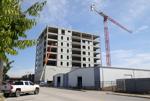
Doug and Lori Schram, along with Jeff and Kathy Weaver, are developing the roughly $30 million Davenport Urban Lofts at 405 N. Main St. Ground was broken Tuesday on the nine-story condominium and retail/office project in the Tulsa Arts District just south of Cain’s Ballroom.
Click here to read more.
The View
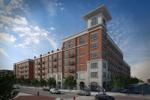
The View is a follow-up to 161-unit The Edge, which opened in the East Village in 2016. But ARG is a multifamily veteran in Tulsa, with other properties such as the Metro at Brady, Renaissance Uptown and Tribune Lofts to its credit.
The six-story $40 million development from American Residential Group broke ground in 2019 at Archer Street and Elgin Avenue. The 198-unit complex will feature two swimming pools, including one on the rooftop, an attached parking structure and bird’s-eye views of the Tulsa skyline and ONEOK Field.
Read more about the project here.
Oklahoma Museum of Pop Culture (OKPOP)
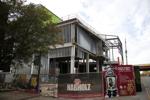
OKPOP will be three stories filled with many stories. Exterior views will be a bonus attraction.
The Oklahoma Museum of Popular Culture (OKPOP for short) is taking shape at a construction site across from Cain’s Ballroom in the Tulsa Arts District. The museum will pay tribute to Oklahoma “creatives” — authors, actors, music artists and others — who have contributed to popular culture.
Greenwood Rising

A long-awaited museum commemorating the victims of the 1921 Tulsa Race Massacre and the legacy of the city’s historic Greenwood District officially opened to the public in August 2021.
The 11,000-square-foot museum, 23 N. Greenwood Ave., is intended to both preserve the history of the massacre itself and document Greenwood’s resurgence afterward.
High-tech exhibits include the re-creation of a barbershop with three-dimensional holograms of barbers at work.
The Brook Restaurant and Bar
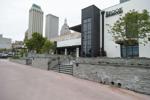
The latest incarnation of The Brook Restaurant & Bar is now open atop what used to be known as the OTASCO building in downtown Tulsa, at the corner of Second Street and Cincinnati Avenue.
The menu for the new Brook is the same as that of the old Brook, at 3401 S. Peoria Ave., in what years ago was the Brook Theater, and the slightly newer Brook, at 7727 E. 91st St. The Brook is known burgers, sandwiches, wraps and comfort food classics, such as chicken-fried steak and nachos.
111 Greenwood

Thanks to the Bhow family, East Village is undergoing a renaissance.
Developers Neal Bhow and his son, Shaun, celebrated two things Friday: the announcement of the first tenants in the refurbished Hartford Building, 110 S. Hartford Ave., and the groundbreaking of an adjacent 50-unit, mixed-use project called 111 Greenwood.
Clarion Events, formerly PennWell, is moving at least 130 employees into a 24,500-square-foot space, and co-working space The HQ Tulsa will occupy 10,800 square feet, with both leases on the second floor.
Sinclair Building

A revitalization is planned for a long underused and more than a century-old building in the heart of downtown Tulsa.
Locally based Ross Group has purchased the Sinclair Building, which was among Tulsa’s first skyscrapers when it opened in 1919. The company plans to invest at least $15 million into a refurbishing that will include apartments and commercial space, Ross Group’s Dave Friedland, project leader said.
USA BMX arena

The $23 million project includes a recessed Olympic-quality racing track that will have starting hills for both amateur riders and the pros. The cavernous 2,000-seat arena has no interior columns.
The development also includes a 25,000-square-foot headquarters and Hall of Fame building south of the arena. The building will have an exterior balcony that looks over the arena.
Arco Building

Price Family Properties plans to modernize the six-story architectural gem, which was completed more than 70 years ago in the Art Deco District. The proposed redevelopment calls for retail space and about 80 apartments ranging from studios to three to four bedrooms. Three retail opportunities totaling 18,500 square feet will be available on the ground floor.
The structure has sat empty for more than a decade at 119 E. Sixth St.
Oil Capitol

Price Family Properties is planning to convert the long-vacant and roughly century-old Oil Capitol Building into 47 units ranging from about 550 to 600 square feet, company President Jackie Price Johannsen said.
The Oil Capitol redevelopment, 507 S. Main St., will feature apartments on floors two through seven.
Santa Fe Square
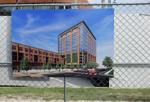
An expansive, mixed-use development that has been years in the making downtown cleared a major hurdle in April 2021.
The newly formed Tulsa Authority for Economic Opportunity approved the issuance of up to $25 million in bonds for the Santa Fe Square project, which the city undertook with the establishment of Tax Increment Financing (TIF) District No. 8 in April 2016.
Initial plans for the two-block development call for office and retail space, a parking garage and apartments. SJS Hospitality opened Hotel Indigo on the site in late 2018.
111 Lofts

The conversion of the former 10-story office building at 111 W. Fifth St. will house 69 apartments, nine of which will contain three bedrooms and range from 2,600 to 2,800 square feet.
The real estate company will be seeking historic tax credits to revamp the building, which was constructed in 1921 and placed in the National Register of Historic Places in 1982.
Reunion Building

Rose Rock Development Partners and downtown attorney and proprietor Ken Brune are teaming up on about a $9 million conversion of the Reunion Building into apartments and retail. The 10-story fixture at the northeast corner of Fourth and Main streets was built in 1917.
Click here to read the latest on this project.
Adams Building
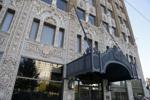
The Adams Building, new home of The Adams Apartments, was added to the National Register of Historic Places in 1978. A transformation of a former hotel built in the 1920s, a mixed-use redevelopment project by Rose Rock Development Partners has 65 apartment units.
See a gallery of the refurbished building here.
East Village project
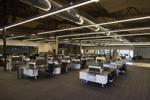
Eye-catching and massive, local digital media company ConsumerAffairs’s new environs are a $13.2 million, 44,253-square-foot redevelopment of four buildings in the 600 block of East Fourth Street.
Cox Business Convention Center

The Cox Business Convention Center had a grand reopening in August 2020 following a two-year Vision Tulsa renovation.
The $55 million renovation complements the existing convention center, built in 1962, and provides major venue upgrades as part of Vision 2025.
Leadership Tulsa's downtown hub

Leadership Tulsa is expanding its footprint.
The community leadership development organization is slated to open a 7,800-square-foot Leadership Center to offer members a host of new opportunities beginning in spring 2020.
“Now, we only have office space in Mapco Plaza. We have simply outgrown the space,” said Wendy Thomas, executive director. “Our new Leadership Center will be a centralized hub with meeting space. It will allow us to offer a lot more continuing education and networking opportunities, as well as turn-key space for board training, strategic planning and other off-site meetings.”
Tulsa Club building
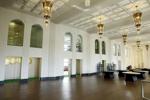
Once an upscale and prestigious social club, where generations of Tulsans attended weddings and galas and high school proms, the building sat vacant for years.
The Ross Group renovated it for $36 million and with the Hilton Curio-branded Tulsa Club Hotel set to open this weekend, it will be “the most expensive hotel in Tulsa, if not in Oklahoma.”
Read an update on the renovation.
Elgin Parking Garage

Valley National Bank, which is changing its name to Vast Bank, is building an $11 million, 399-space public parking garage at 2 N. Elgin Ave. The four-story parking garage will accommodate tenants and customers of its $33 million office building under construction, as well as patrons of ONEOK Field, the soon-to-open Holiday Inn Express, and the Tulsa Arts and Blue Dome districts.
Read more about the Elgin Parking Garage here.
Arvest Parking Garage

Arvest Bank will have a four-story, 180-space parking garage at Fifth Street and Boulder Avenue. Access to the upper levels of the new facility will be integrated through the Bank of America structure next door at 15 W. Sixth St.
Read more about the Arvest Bank downtown parking garage here.
Cathedral District buildings

Cathedral District Office Portfolio LLC is converting warehouse space at 818 S. Detroit Ave. into offices. The building is the former Standard Parts Warehouse from the 1940s, and primarily has been used for storage in recent years. Other pieces of the Cathedral District Office Portfolio are 220 E. Eighth St., a 20,000-square-foot building formerly occupied by Crafton Tull; the Cathedral District Business Center at 823 S. Detroit Ave., formerly the Bovaird Building; 801 S. Detroit Ave., which is occupied by Cash Finance; and 809 S. Detroit Ave., which is occupied by Gellco Clothing & Shoes.
Read more about the project here.
Mixed use project at Greenwood, Archer

A five-story, mixed-use 70,000-square-foot development planned by GreenArch, LLC for the southeast corner of Greenwood Avenue and Archer Street will feature multiple levels of office space above a ground-floor, retail/office component.
Read more about the project here.
First Place parking garage
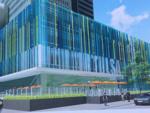
A rendering shows the 500-slot parking garage with 3,000 feet of initial retail space proposed by First Place LLC on the plaza at Fourth and Main streets. Being developed by Stuart Price, the project must maintain access via the tunnel system to Main Park Plaza Garage.
Read the story here.
The Cheairs Furniture Co. building

Brickhugger LLC, a Tulsa development company that focuses on renovating historic buildings with the assistance of historic tax credits, is working to turn the Cheairs Furniture Co. building, 537 S. Kenosha Ave., into an ice-house style bar, which will include a large open space, high ceilings and possibly as many as 100 beers on tap, according to Shelby Snyder Hendrick, president of the company. The building, in the East Village area of downtown, was recently added to the National Register of Historic Places and is part of NORDAM's former downtown headquarters.
Read more about the project here.
Vast Bank building in Greenwood District

Vast Bank, formerly Valley National Bank, will move its executive offices and open a downtown branch in a new building at 110 N. Elgin Ave. Other tenants will include In the Raw sushi bar, BKD LLC and Casillas Petroleum. Tulsa Development Authority accepted a proposal last year by the Ross Group that includes a multi-story office building, the first story of which would be for retail commercial, on a 1-acre lot across from ONEOK Field.
Read more about the project.
Hyatt Place Hotel

A 13-story high-rise at 400 S. Boston Ave. is being converted into a Hyatt Place Hotel. The dark gray building, which opened as a savings and loan in 1967, has “curtain walls” made of a reflective glass developed by Pittsburgh Plate Glass and designed to save the builders “22 tons of air conditioning.” The project is headed by veteran developer Jim Hawkins, managing member of River City Development. River City recently completed the renovation of the Enterprise Building into the Meridia Apartments.
Read more about the project here.
The Flats on Archer

The Flats on Archer, 110 N. Boston Ave., will be a five-story multifamily property with 62 units and commercial space on the ground floor. Developers Sam Combs and Howard Aufleger broke ground on the project in April.
Read more on The Flats on Archer here.
Holiday Inn Express & Suites
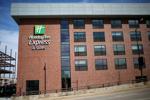
The new Holiday Inn Express & Suites, 310 E. Archer St. in the Tulsa Arts District, opened Jan. 22. The $16 million project, a collaboration of Promise Hotels and Ross Group, has 115 guest rooms, including 18 suites. The five-story hotel will also feature an indoor heated pool, fitness center and business center, a hot breakfast and Keurig coffee makers in each room.
Read more about the downtown hotel.
Hotel Indigo

The national boutique brand, which is part of Santa Fe Square on Elgin Avenue between First and Second streets, opened in early November. The $20 million, 93-room hotel is owned by Blue Dome Hotel Group LLC and managed by SJS Hospitality. The hotel, which has an oilfield-inspired theme, features an upscale restaurant on the ground floor called Prospect and an indoor-outdoor bar on the top floor called Roof Sixty Six.
Read more about the new downtown hotel.
Residence Inn
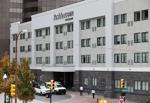
The Residence Inn & Suites, 202 W. Fifth St. and next door to the old YMCA building now Y Lofts, opened in October. It contains 117 guest rooms — all suites — and an 80-space parking lot. It also features a 1,300-square-foot meeting room, fitness room, breakfast area and swimming pool.
Read more about the hotel here.
The Hartford Building

The $7 million renovation of the Hartford Building at 110 S. Hartford Ave. features three floors of office space. Developer Neal Bhow transformed the 74,000-square-foot building into open space and enlarging the square footage of the windows in front by nearly 300 percent. The Hartford Building has been vacant since the city of Tulsa moved offices from there in 2008.
Read more about the Hartford Building.
Jacobs Lofts on First
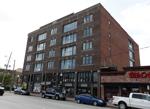
Ross Group has started pre-leasing the Jacobs Lofts on First at 310 E. First St., and a grand opening is expected this summer. Formerly the First Street Lofts, the project has been renamed for Louie Jacobs, owner of the rooming house that originally occupied the brick building built in 1918. Ross Group, which purchased the building in 2016, says it will feature 28 units on the second through fifth floors and retail space on the first floor.
Read more about the housing developments downtown.
First Baptist Church
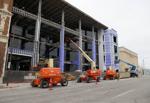
Cranes lift workers to upper floors of the $13.7 million expansion at the First Baptist Church in downtown Tulsa. The new 72,000-square-foot building on Detroit Avenue between Fourth and Fifth streets, which features a glass exterior and new main entrance, opened in September.
Read more about the project here.
Former KOTV Building
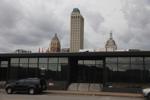
Locally owned Poppi’s Urban Spa has signed a lease for 3,500 square feet of space at 302 S. Frankfort Ave. in downtown Tulsa. Core Associates has refurbished the space on the east end of downtown, which still has about 8,500 square feet available for lease.
Read more about the property here.
New restaurants: Taco Bueno and Burger King

A Taco Bueno and Burger King combination restaurant has joined the downtown food offerings. Local franchisee Rick Verity opened the co-branded restaurant in a 5,000-square-foot space on the ground floor of the Palace Apartments, 324 S. Main St.
Read more here.
The Meridia
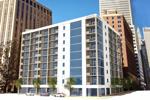
The Meridia, at Sixth Street and Boston Avenue, features 93 one- and two-bedroom apartments, many with open-air balconies. The first level of the nine-story building includes 9,750 square feet of retail space. Poke Bowl Love, a restaurant featuring the Hawaiian specialty, opened this fall on the ground floor.
Read more about the residential project.
GKFF renovating the Archer Building

Three businesses in the Archer Building opened last summer — the Goods Bodega, Guitar House of Tulsa and Made: The Indie Emporium Shop — and more opened in time for the holiday season, including Magic City Books and a Lone Wolf sit-down restaurant. The George Kaiser Family Foundation has spent about $17 million to renovate the former warehouse on the north side of Archer Street between Martin Luther King Jr. Boulevard and Detroit Avenue. The 72,000-square-foot building also holds 14 artist apartments and 35 artist work spaces.
Read the latest about the GKFF project.
The Palace Building

The Palace Building includes a 58-unit apartment building with one-fifth of those planned as affordable housing. It the ground floor includes restaurant space that holds a Taco Bueno and Burger King.
Read more about the Palace Building.
Hampton Inn & Suites

The hotel is one of three expected to be constructed downtown by Promise Hotels. The nine-story, 125-room hotel is being built by Ross Group within the One Place development on the northwest corner of Third Street and Cheyenne Avenue at a cost of $17.5 million. It opened in March.
Read more about the new Hampton Inn & Suites.
The Boxyard
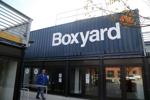
The Boxyard at Third Street and Frankfort Avenue is a retail-focused micro-mall made up of shipping containers that opened in December 2016. Developed by Nelson Stowe, the East Village center includes local restaurant and retail offerings.
Read more about the Boxyard here.
The former downtown YMCA: Y Lofts

The former downtown YMCA at Sixth Street and Denver Avenue has undergone a $9 million transformation into a 79-unit apartment building. Historical features such as hardwood from the Y’s racquetball and basketball courts, white porcelain drinking fountains, even basketball goals and a scoreboard have been incorporated into the units. Leasing began earlier this year.
Read more about the latest news on the apartments in the old YMCA building.
Fox Hotel and Universal Ford buildings

Antoinette Baking Co. and The Tavern are among the businesses in the Fox Hotel and Universal Ford buildings, which also include a brew pub, 36°North entrepreneurial hub and artist apartments. The $16 million conversion was undertaken by the George Kaiser Family Foundation.
Read more about some of the renovations.
The Transok Building
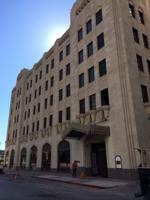
The Transok Building, 2 W. Sixth St., has 37 luxury apartments on four floors. The living areas, located in the heart of the Deco District, will comprise studio and one- and two-bedroom plans that will range in size from 536 to 1,247 square feet. Close to 9,000 square feet on the ground floor is available for lease.
Read more about the project.
East End Village

East End Village, a total renovation of the block bounded by Fourth and Fifth streets and Elgin and Frankfort avenues. The first phase of East End Village, which created 48 apartments on the block, is now completely occupied. An additional 35 apartments, along with 6,000 square feet that could be used for retail or office space, were part of phase two.
Read more about downtown living and the East End Village.
Elgin Park brew pub and KSQ Design office

An artist’s rendering shows the building transformation planned at 216 N. Elgin Ave. The building will house Elgin Park brew pub on the first floor and the Tulsa offices of KSQ Design on the second floor.
Read more about the new brew pub and office.
Ross Group headquarters
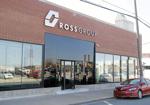
The Ross Group's headquarters in downtown Tulsa is a former International Harvester dealership at 510 E. Second St. The $9 million project incorporated the blues, yellows, greens and oranges of the company's vehicles and represents the design, engineering, construction and development company’s growing work in historic renovation.
Read more about the Ross Group headquarters.
The Edge

The Edge at East Village, formerly known as Hartford Commons, is at 211 S. Greenwood Ave. The $25 million complex added 161 apartment units to the east side of downtown.
Read more about The Edge.
Urban 8 townhouses
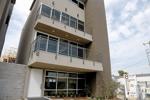
The brainchild of Yvonne Hovell, the series of eight, four-story townhomes are wrapping up construction at 222 S. Kenosha Ave. in the East Village The four-story units include a two-car garage on the ground floor.
Read more about the townhouses.
Coliseum Apartments
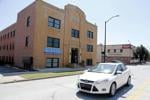
The $3 million project brought 36 new units downtown.
Read more about the Coliseum Apartments.
Best Western Plus Downtown Tulsa/Route 66 Hotel

The hotel, located at 707 S. Houston Ave., opened in May. The building which was formerly an office owned by the city of Tulsa.
Read more about the new Best Western.
Check out our latest digital-only offer and subscribe now

Check out our latest digital-only offer and subscribe now: Tulsaworld.com/subscribe
"local" - Google News
December 26, 2021 at 01:30PM
https://ift.tt/3qwEAwW
Local business sector ripe with successes in 2021 - Tulsa World
"local" - Google News
https://ift.tt/2WoMCc3
https://ift.tt/2KVQLik
Bagikan Berita Ini
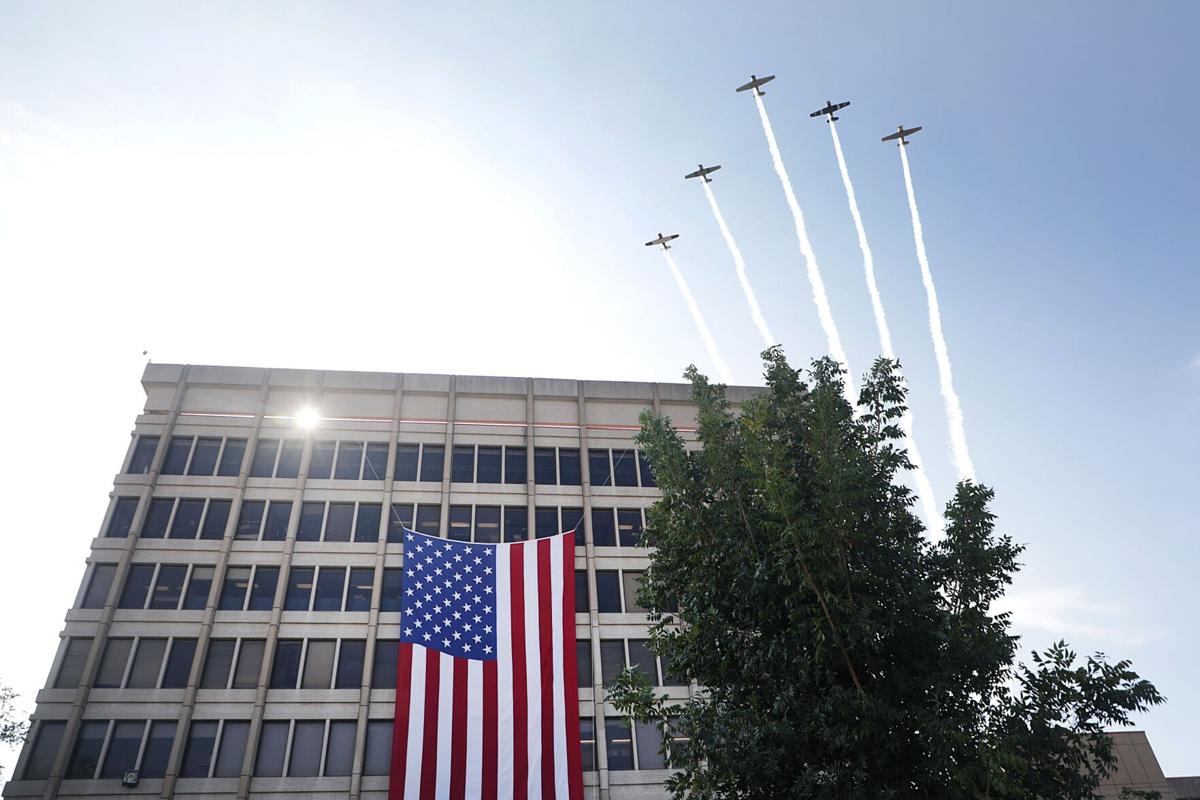
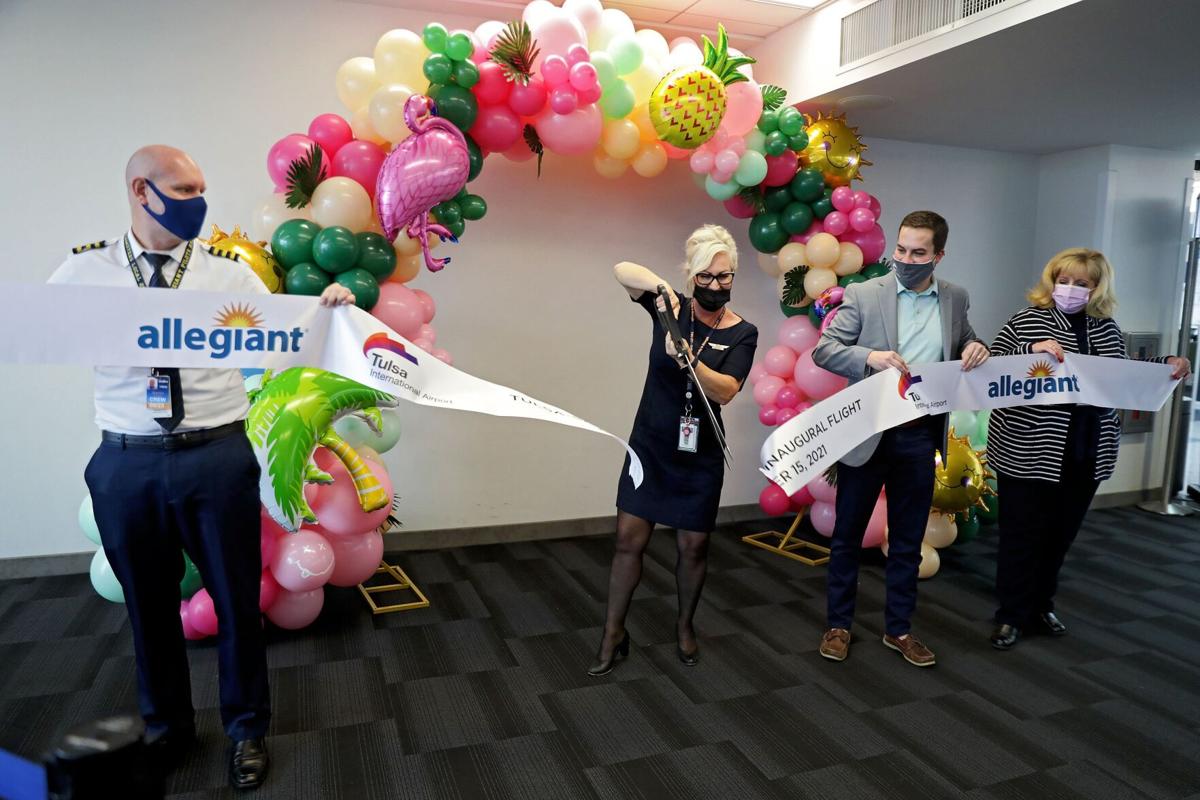

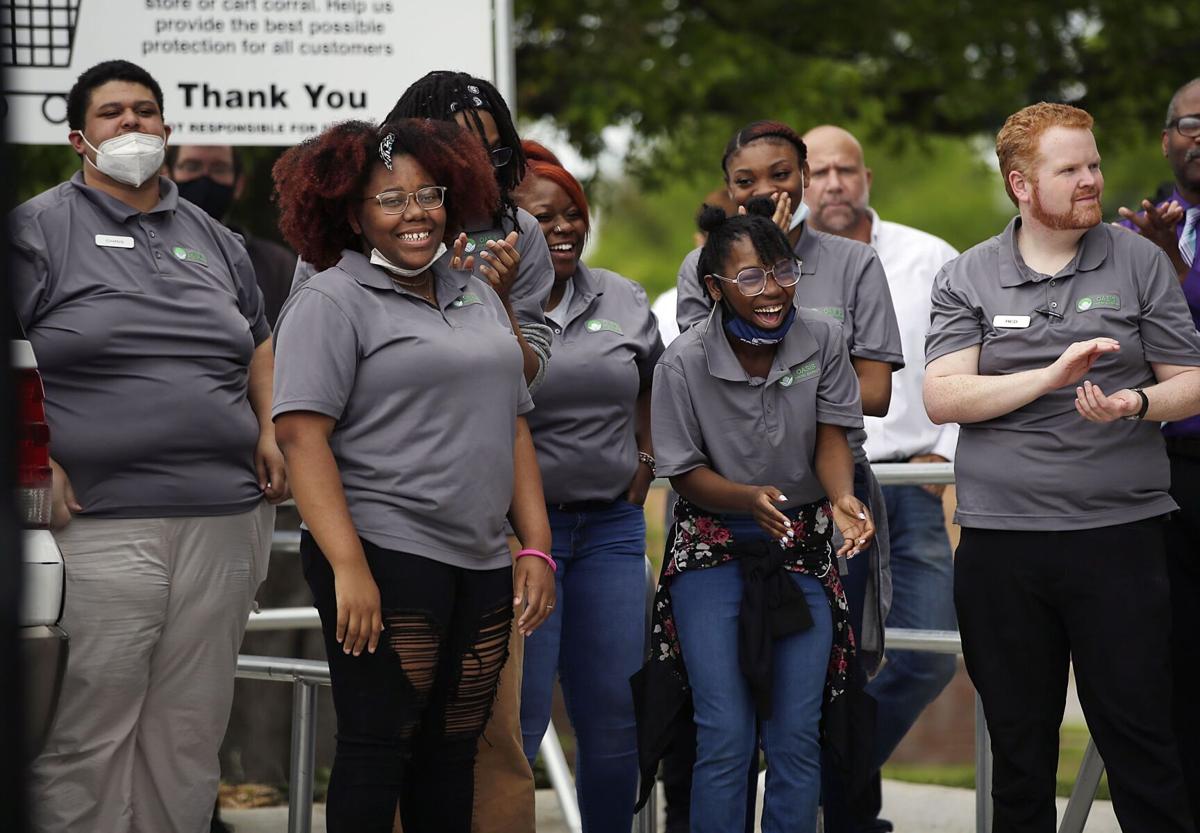

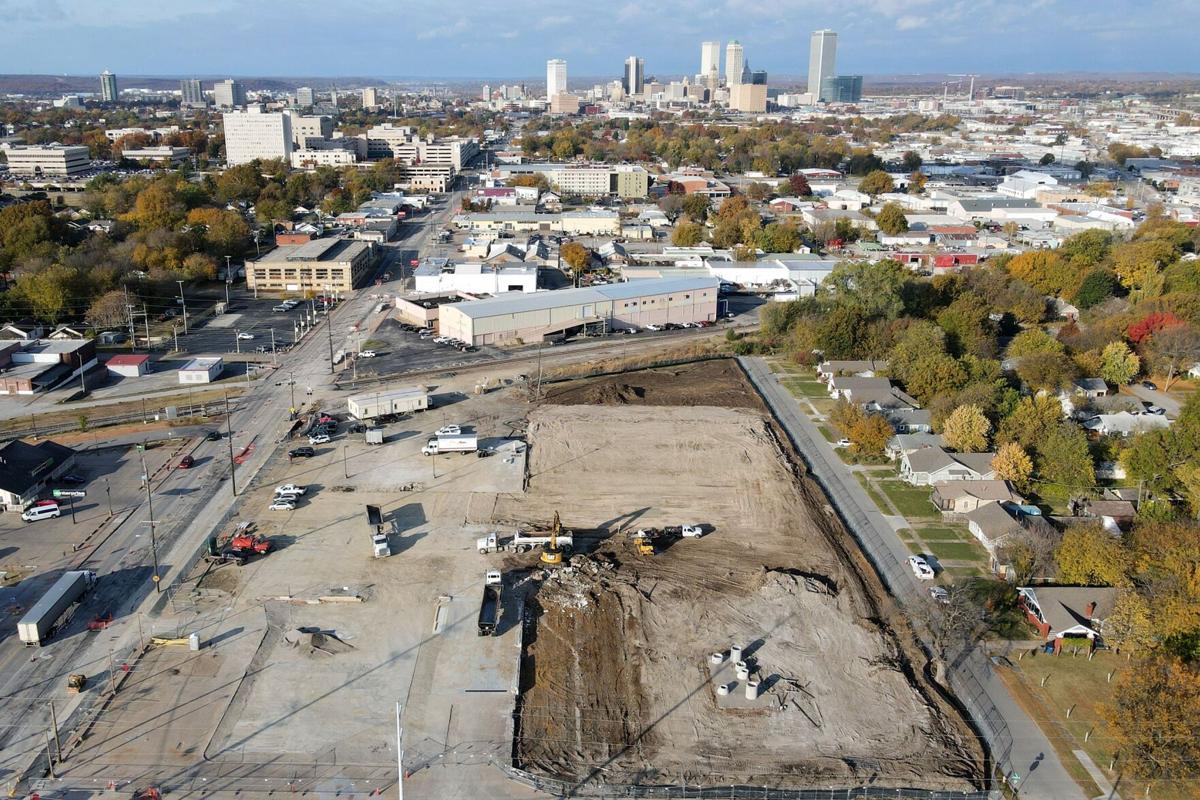














0 Response to "Local business sector ripe with successes in 2021 - Tulsa World"
Post a Comment